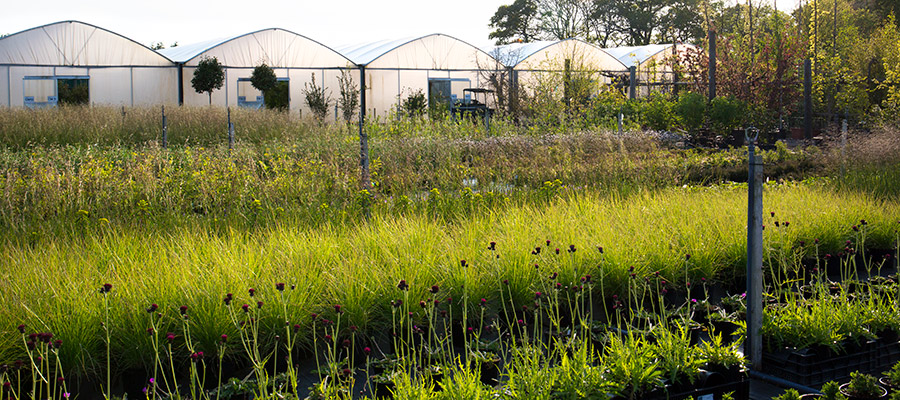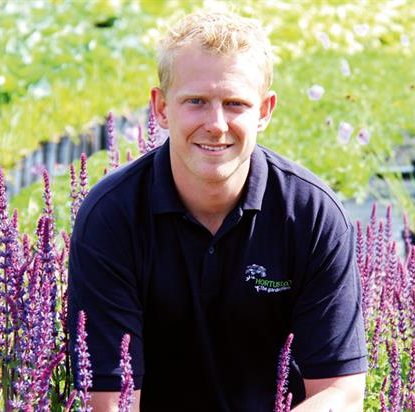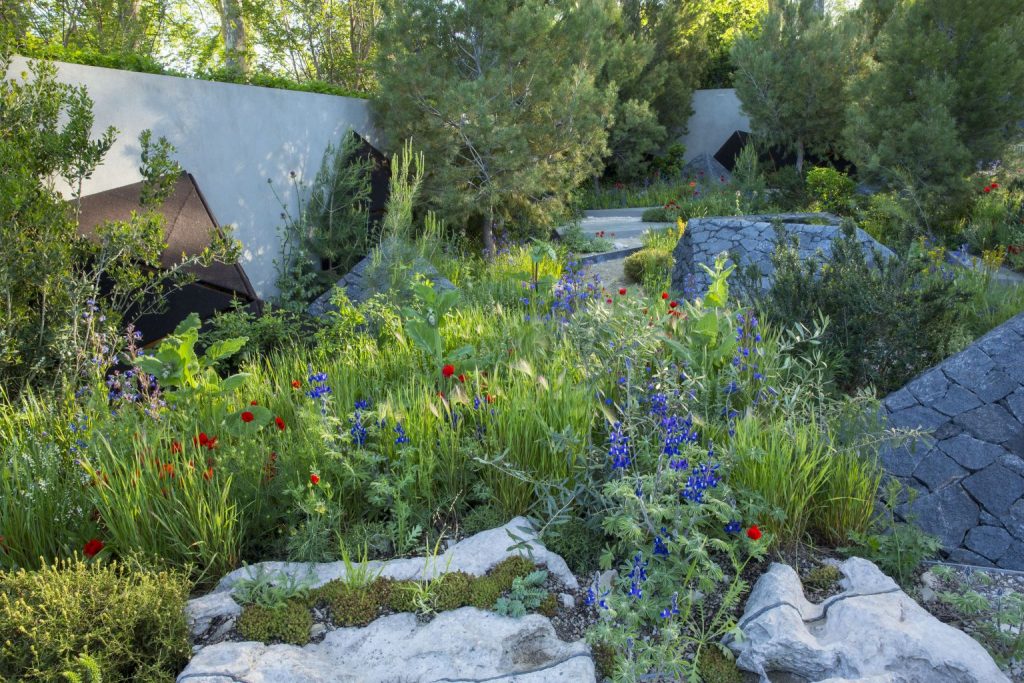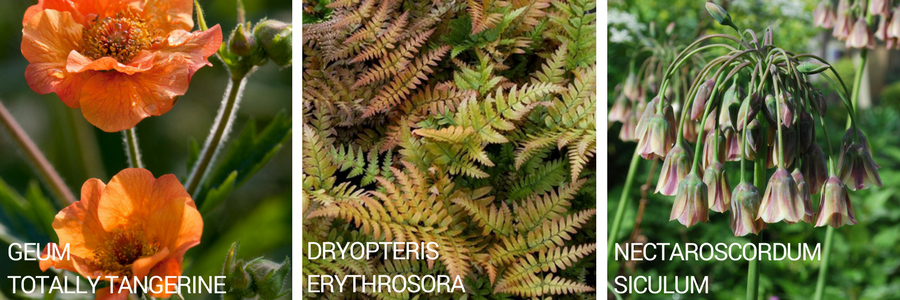Now we’re into November the garden show season seems like it was a lifetime ago, but of course the behind the scenes preparation for such events is a year-round thing. Hortus Loci are one of the nurseries responsible for growing the amazing plants shown at the likes of Chelsea and Tatton,and we were delighted to sit down for a chat with their General Manager, Michael Buck, to find out a little more about what goes on at a modern plant nursery…
Michael, first things first: tell us a bit about Hortus Loci.
We’re a nursery based in north Hampshire and in fact we turned six years old last month. The nursery is under the direction of Mark Straver and Robin Wallis, both of whom come from a long line of nurserymen and are well known for their expertise and plant knowledge. Mark came from Crocus, where he was responsible for sourcing a lot of their more unusual plants, and Robin was working at Chichester Trees and Shrubs and they decided to strike out on their own.
Mark came to Hortus with very good reputation for his exhaustive knowledge of plants and ability to source really unusual varieties, so right from day one we had four Chelsea Gardens to grow for, which really consolidated our reputation.
How do you work with designers for shows like Chelsea?
We’ll sit down with the designer and their list of plants, trees and shrubs and then work out what we can supply and what we’ll need to source. Sometimes it’s relatively straightforward, but other times it requires a little bit more creative thinking.
Two years ago the designer, Hugo Bugg, arrived in our office. Hugo was doing a project for the Royal Family in Jordan and had decided to create a garden at Chelsea inspired by that garden in Jordan. We looked at the list and between the three of us (myself, Mark and Marina Christopher) we knew one plant on a list of 150 (a giant Fennel), which didn’t flower in time for Chelsea anyway. We spent some time in the office going through the list and then Marina, Mark and I came up with a list of alternatives which either grew in Jordan or something that looked very similar that we know we could grow here. We had nine months to produce a garden, predominantly sourced from licensed seed from Israel, Palestine and that area, but we also had the head gardener at the botanical gardens taking seeds for us off their own sites and we had it all shipped over to Hook where we propagated and grew it and produced 7,500 plants for a Chelsea garden.
Was there any interest in those plants after Chelsea? Were any of those plants incorporated into your catalogue?
It was a pretty specific plant list, but we took three plants out of that garden and we grow them now as part of a core range of annuals which we have each year. In Jordan they’re grown as perennials, but they do well here if you treat them as annuals.
Is it normal to be faced with so many unusual plant choices?
I think we’re always striving to find varieties which set us apart, so although we might be familiar with 95% of plants on a list, it’s sourcing and showing the remaining 5% where the excitement lies. Those are the game changers.
And, yes, to answer your question they do get incorporated into our retail section, so if you’re excited by a garden at Chelsea or Hampton Court you can – as a member of the public – take those ‘plantsperson’ specimens home.
Alchemillia mollis always used to be quite a standard plant, but it’s gone out of fashion a bit and we’ve seen an alternative: alchemilla erythropoda (a smaller leaved variety) come into fashion which isn’t as bullish as mollis. Erythropoda is a bit more delicate – it still gives you the colour, but it’s a very versatile, delicate plant.
Are there any plants that you think are timeless or that every garden should incorporate?
There are three that immediately spring to mind.
Geum ‘Totally Tangerine’ is a really hard worker: it’ll flower from the end of April all the way through to July and is a great addition to any garden. I’d like to see more ferns in gardens: they have a wonderful ability to take hold of and fill spaces in a way that herbaceous plants can’t. Two great varieties are Dryopteris erythrosora, which comes up with rusty orange fronds which turn to green and Dryopteris wallichiana which has dark veins with a glossy green frond that get to about a metre tall, so are very good at the back of the border.
I’d also love to see more tulips in the garden. A good tulip screams out spring to me and obviously Kuekenhof in Holland celebrates that fact but I think the Queen of the Night tulip, a dark one would be a superb addition to any garden and if you can grow the bulbs then you absolutely should.
And any that are overdone?
I would be tempted to steer away from alliums: they’re very good for retail because they look amazing and they are a good plant, but I do think they’ve been overdone and certainly in the last decade.
Is there an alternative? They do bring a certain structure to any garden don’t they?
Something that would give that structure but that’s a bit more delicate would be a Scabious – my favourite of which is scabiosa ochroleuca, which is that beautiful buttermilk, primrose yellow and would lift any border, especially through grasses. Then there are the umbells, like cenolophium denudatum and the wild carrots, which aren’t a complete globe like the allium, but they do a very good job of giving that umbel interest. And although the shape is different, nectaroscordum siculum (also known as Sicilian Honey Lily or Honey Garlic) is a very good, tall interesting bulb. That’s a nice alternative.
How about the trend for planting for wildlife – how does your process incorporate that, if at all?
There’s definitely a trend, yes. Here at Hortus, most of the plants that we supply are strong pollinators anyway, but industry-wise there has been a huge push – and rightly so – for plants that support wildlife, and pollinators in particular. When we were at Hampton Court this year one of our plants – Eryngium Big Blue – sold out within three hours, because the honey bees were just all over it. People are attuned to the fact that that’s a plus, which is great.
Designers like Nigel Dunnett have done a great deal for bringing wildlife planting to the fore, and his wildflower meadows are amazing. He also worked on The Greening Great Britain campaign from the RHS, so the idea of this kind of symbiotic garden is very much in the forefront of people’s minds at the moment.
We have a list of things which are great for bees, but if equally we have plants which are great for moths, like verbascums, which are pollinated by moths and moths only. We grow thousands of them…
That’s a great point: we all too often assume pollinators means bees – and honey bees at that – but of course that grouping is so much larger than that, so I’m pleased that you mention the others.
Plants have adapted over the centuries to what they know is best, so if it’s a white or yellow flower like wild parsnips or carrots, generally they’ll be pollinated by flies. Bees tend to pollinate blue, pink and purple flowers, whilst birds often go for the reds and along that spectrum. Obviously there are exceptions to every rule in horticulture, but it’s a good rule of thumb to know.
And certainly explains why the lavenders, nepetas and honeyworts are always drooping under the weight of bees!
Exactly!
A final question for you, Michael: what is a modern garden?
Wow! That’s a good question: it’s in the eye of the beholder, but I think it’s about bringing the inside of your home out, and the outside in. We’re starting to view the garden as an additional space or room without a roof rather than an entirely different zone. The rise in popularity of bi-fold doors only emphasizes this as does the availability of floor tiles which echo indoor tiling, so you can get a clean line between inside and out – design is a lot more integrated than I remember it being when I started out in horticulture.
Perhaps more so in London than anywhere else, but you do see these huge houses with a post-it note sized garden where they try to get the most out of their space and there’s been a lot of innovation there: things like green walls, these canopies where tree ferns are the go-to choice and create an almost tropical feel.
You might associate the term ‘modern’ with clean-cut lines or minimalistic planting, but that’s not how I see it. I think of it more as an evolution of lifestyle. I see the modern approach as one that embraces the whole ecosystem and enhances your lifestyle.
Find out more about Hortus Loci by visiting their website.








